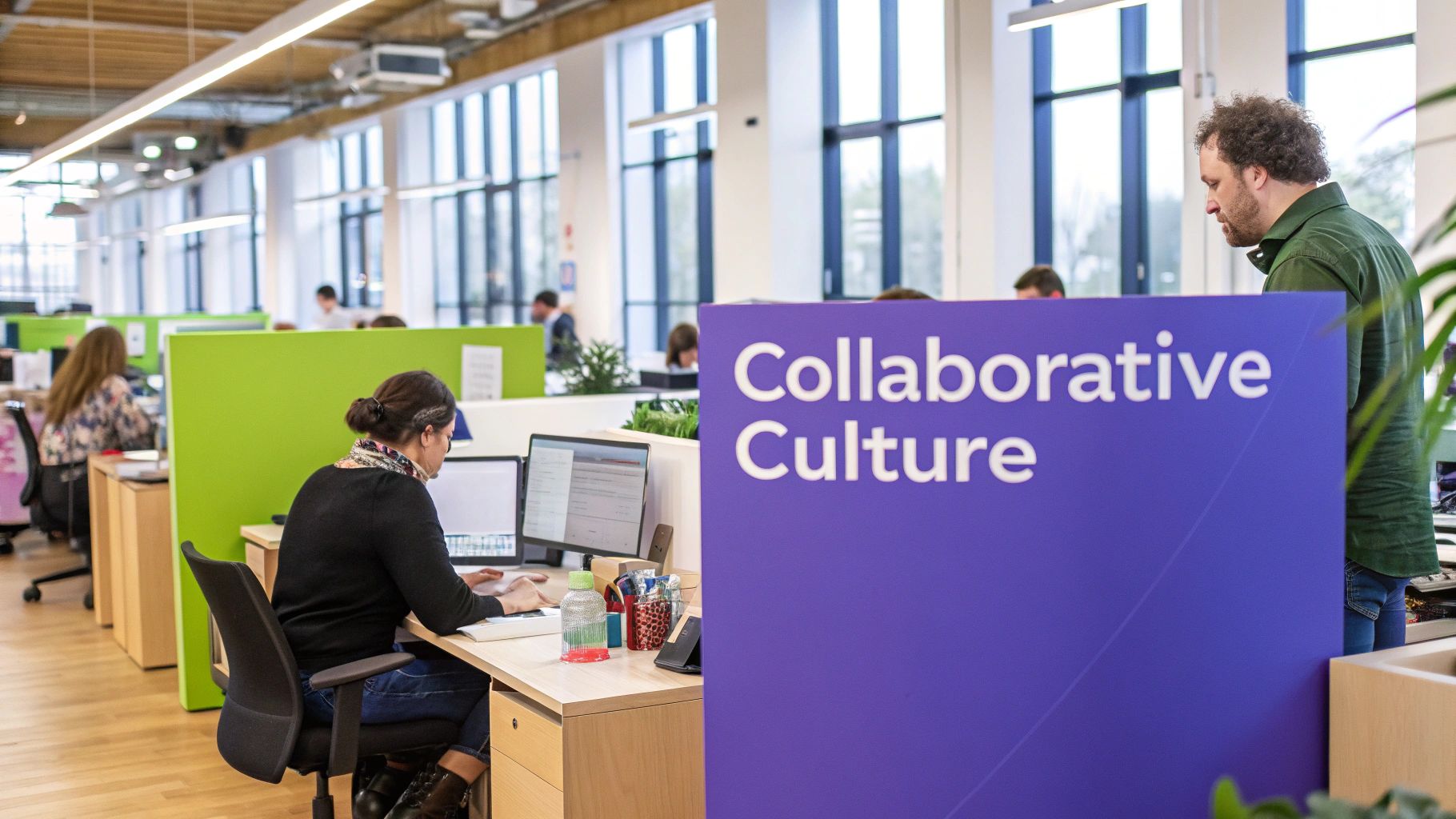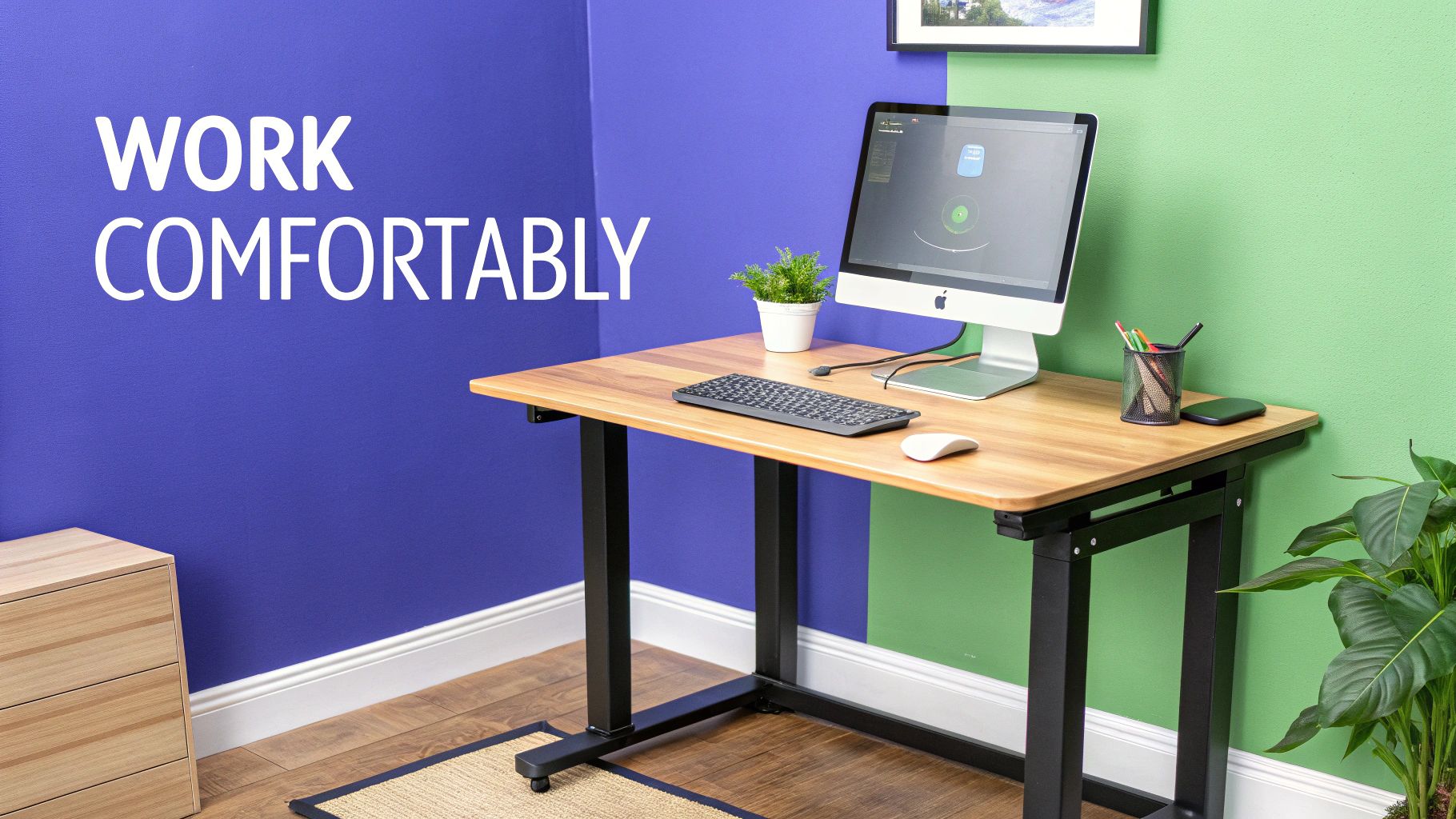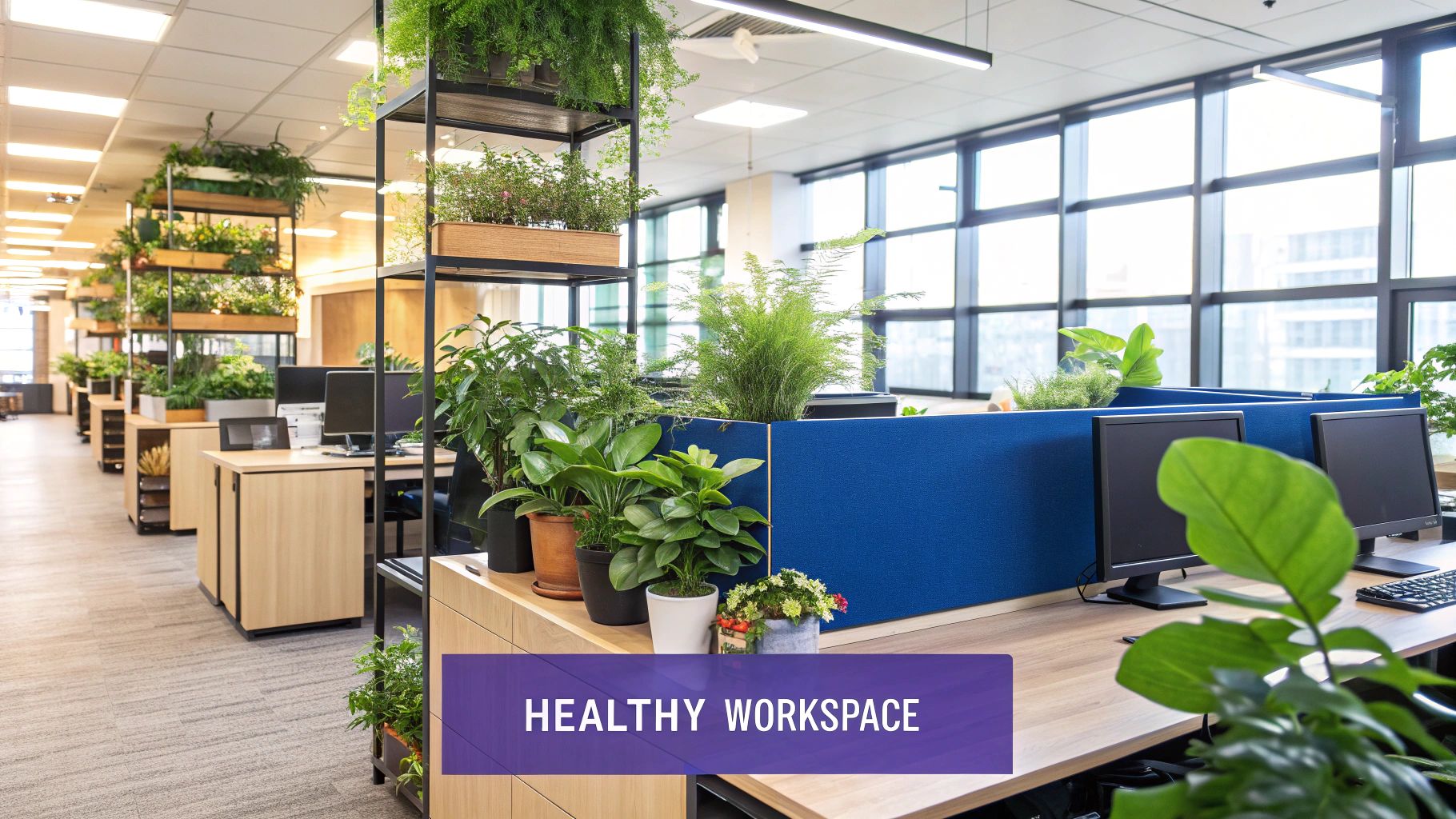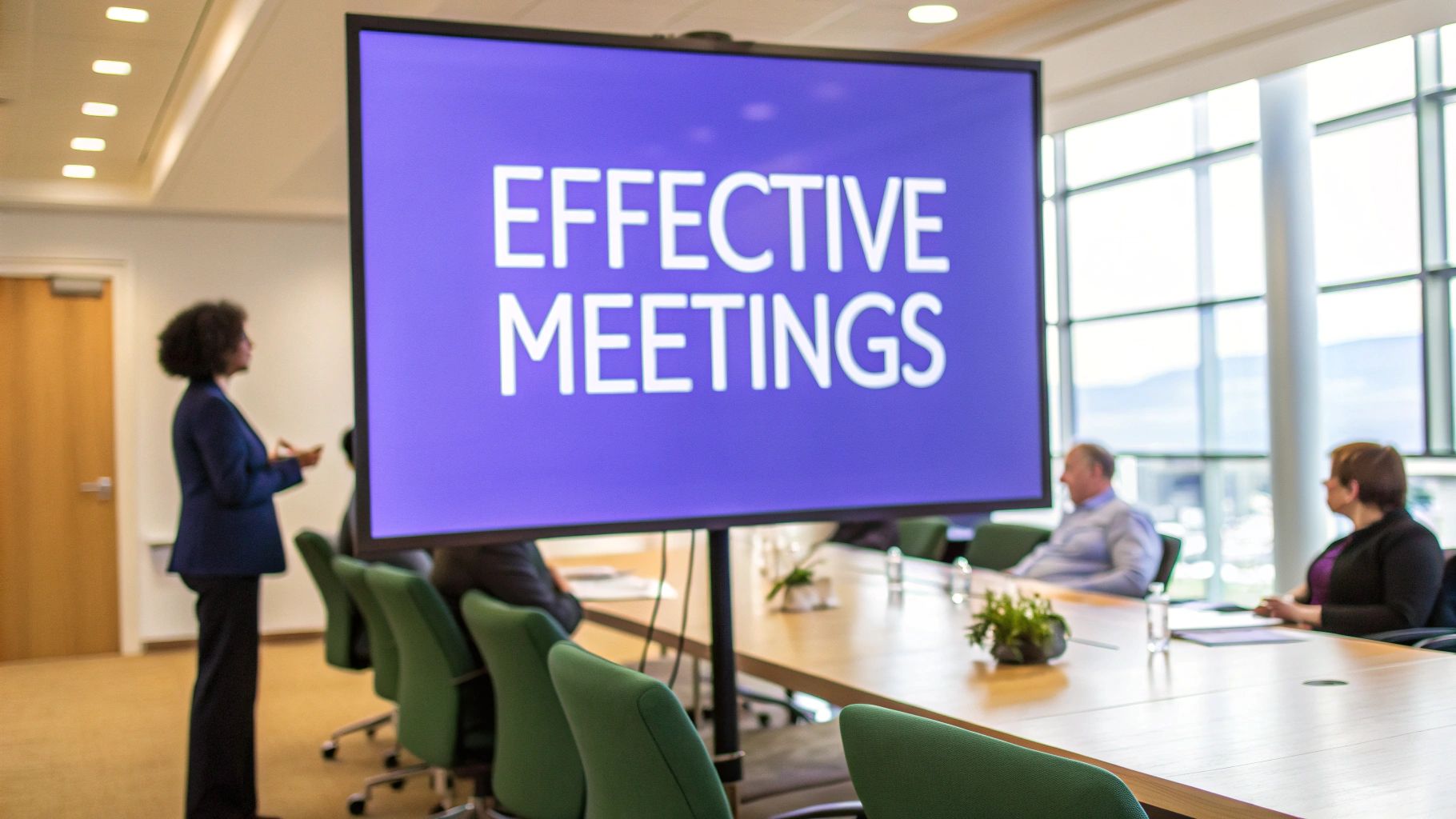Creating a Conducive Working Environment: The Psychology of Peak Performance
Why Your Workplace Environment Makes or Breaks Success

The quality of your work environment directly shapes both individual performance and business outcomes. Research from leading institutions like Harvard and MIT has shown just how much workplace conditions influence key metrics. For instance, teams working in positive environments achieve 37% higher sales and 31% better productivity compared to those in suboptimal settings. They also make 19% fewer mistakes, demonstrating that the right environment promotes both efficiency and accuracy. These findings make it clear - investing in great workspaces isn't just about employee comfort, it's essential for driving real business results.
The Impact of a Conducive Working Environment on Key Metrics
A good work environment creates positive effects that extend far beyond day-to-day operations. Employees in supportive workplaces show remarkably higher loyalty, being nine times more likely to stay with their organization. This dramatically reduces the costs of recruiting and training new staff. The health benefits are equally striking - staff in positive environments take only half as many sick days as those in less supportive settings. With higher retention and lower absenteeism, teams maintain stronger continuity and sustained output. The data shows that workplace quality influences every aspect of organizational health.
Beyond the Physical: Emotional Well-being and Productivity
While proper lighting, ergonomics and office layout matter greatly, the emotional atmosphere is just as crucial for productivity. In fact, 82% of workers say their emotional well-being is the main factor driving their output. This highlights why organizations must create spaces where people feel psychologically safe and supported. It takes more than surface-level perks - it requires fundamentally rethinking how workplace design and culture come together. The most effective environments address both physical comfort and emotional needs, ensuring employees feel valued and empowered to do their best work.
Fostering a Culture of Trust and Open Communication
Trust and open communication form the foundation of any high-performing workplace. When people feel safe sharing ideas, giving feedback, and raising concerns without fear of judgment, it unlocks their full potential. Teams with high psychological safety consistently show better problem-solving abilities and more willingness to innovate. They also develop stronger bonds and maintain higher morale, creating an upward spiral of positivity and productivity. Learn more in our article about How to master workplace culture for better results. Building and maintaining a supportive environment requires ongoing commitment and adaptability, but the investment pays off through enhanced teamwork and results.
Designing Spaces That Enhance Human Performance
The connection between workspace environment and business success goes far deeper than most realize. Forward-thinking organizations are discovering that thoughtfully designed offices deliver measurable returns - companies investing in body-conscious design see up to 1,513% ROI and 48% lower turnover rates. These numbers point to a clear link between workplace design and financial performance. The key lies in understanding how environmental elements affect both individual cognitive abilities and team dynamics.
The Power of Natural Light and Temperature Control
Natural light plays a vital role in creating productive workspaces. Research consistently shows that access to daylight improves employee mood, reduces stress levels, and increases mental alertness. The effects translate directly into better work output and creative thinking. Temperature is equally important - according to industry studies, even small temperature shifts can dramatically impact productivity. For example, when office temperature drops from 25°C to 20°C, productivity on certain tasks can fall by 50%. Getting these basic environmental factors right makes a substantial difference in how people feel and perform throughout the workday.
Strategic Layout Choices and Their Impact on Collaboration
The physical layout of a workspace shapes how teams interact and collaborate. Consider the difference between a well-designed open office with designated quiet zones for focused work alongside collaborative areas for team projects. This balanced approach supports different work styles while maintaining community. In contrast, open offices without quiet spaces often lead to constant interruptions and reduced output. Success comes from providing varied spaces that enable both concentrated individual work and effective team collaboration. This thoughtful approach to spatial design directly impacts how well people can work together.
Real-World Case Studies: Transforming Workspaces, Transforming Results
The benefits of improved office design show up clearly in company results. One organization saw employee satisfaction rise 20% and productivity increase 15% after adding more natural light and collaborative areas. Another company reported significantly lower absenteeism after installing ergonomic workstations and wellness programs. These examples demonstrate concrete, measurable improvements in both worker wellbeing and business performance. Such real-world successes provide a roadmap for other organizations looking to create workspaces that help their people perform at their best.
Building The Emotional Architecture of High Performance

While physical workspaces impact how we work, the emotional environment plays an equally vital role in shaping performance. Creating spaces where people feel safe, valued and empowered goes far beyond surface-level perks. Recent studies show that 82% of employees cite emotional well-being as their main driver of productivity. This makes sense - when people feel supported and trusted, they're more likely to take creative risks and contribute their best ideas.
Fostering Psychological Safety
A key foundation is psychological safety - an environment where people can voice different opinions, admit mistakes, and take interpersonal risks without fear of negative consequences. When teams have this safety net, they can focus their energy on meaningful contributions rather than self-protection. Open communication flourishes as feedback becomes a tool for growth rather than criticism. Research consistently shows that psychologically safe teams achieve better results and come up with more innovative solutions. For more on this topic, check out our guide on building an emotionally intelligent team.
Managing Emotional Energy
Just like physical energy, emotional energy requires careful management to prevent burnout. Dealing with workplace dynamics and stress takes a real toll if not balanced with opportunities to recharge. Smart organizations provide dedicated quiet spaces, mindfulness programs, and training in emotional regulation techniques. This proactive approach helps employees sustain their emotional resources over time, leading to more consistent productivity and lower burnout rates.
Designing Spaces for Emotional Well-being
The physical design of workspaces directly influences emotional states. Natural light boosts mood and alertness, while biophilic elements like plants and natural materials reduce stress levels and help people think more clearly. Offering different types of work areas - from collaborative hubs to private focus spots - allows people to match their environment to their emotional needs throughout the day. When organizations thoughtfully combine these elements, they create spaces that actively support both emotional health and high performance.
Creating Spaces That Spark Natural Collaboration
The physical layout and design of workspaces play a key role in shaping how teams interact and work together. Research shows that 48% of employees consider their workplace environment essential for effective collaboration. Creating intentional spaces that enable both teamwork and focused individual work helps teams perform at their best.
Designing for Different Collaboration Styles
Teams need different types of spaces to support various collaborative activities. Brainstorming sessions thrive in open areas with writable walls and casual seating arrangements that get ideas flowing freely. Project work often requires dedicated rooms with the right technology and tools for the team. The key is providing options that match different collaboration needs - from impromptu discussions to structured meetings.
The Importance of Balancing Private and Collaborative Space
While open offices can boost interaction, employees also need quiet places to focus. Think of workspace like an ecosystem - it requires diverse "habitats" to function well. A thoughtful mix of collaborative and private areas lets people choose the right setting for their work. Some tasks demand concentration while others benefit from discussion. This variety helps teams stay productive while maintaining connections.
Examples of Effective Collaborative Spaces
Many organizations are creating versatile workspaces that promote natural teamwork. For instance, some companies set up "innovation zones" with interactive tech and flexible furniture specifically for creative problem-solving. Others combine hot-desking with quiet areas so employees can pick spaces matching their daily needs. Comfortable break rooms and casual meeting spots also play a vital role by enabling spontaneous conversations that often spark new ideas and strengthen team bonds.
Measuring the Impact of Collaborative Spaces
To evaluate if collaborative spaces are working, organizations can track metrics like team productivity, project timelines, and employee satisfaction. Monitoring how different areas are used reveals which designs best support teamwork. Regular feedback from employees helps refine spaces to match real work patterns. This data-driven approach allows continuous improvement to create environments where collaboration happens naturally. The goal is workspaces that help teams thrive while giving individuals the flexibility they need.
Implementing Well-being Programs That Actually Work

The modern workplace needs more than just an attractive office space - it requires genuine commitment to employee well-being. Companies are discovering that superficial perks aren't enough anymore. Recent research shows that 92% of employees now value their well-being just as much as their salary. This shift means organizations must develop meaningful programs that support both physical and mental health to meet changing employee needs.
Why Traditional Wellness Programs Fall Short
Standard wellness offerings like gym memberships and health screenings address only a small part of employee well-being. While these benefits have their place, they often exist in isolation from day-to-day work life, leading to low participation and minimal real impact. For instance, providing gym access doesn't help if workplace stress prevents people from having time or energy to use it. A broader approach that weaves well-being into the fabric of company culture is needed.
Designing Holistic Well-being Initiatives
Leading organizations are taking a complete approach by integrating well-being throughout their workplace design and culture. Key elements include:
- Mindfulness and Meditation Spaces: Quiet areas where employees can take breaks to reset and reduce stress during busy workdays.
- Ergonomic Workstations: Quality adjustable furniture that prevents physical strain and supports long-term health.
- Healthy Food Options: Nutritious choices in cafeterias and subsidized meal programs that make it easy to eat well at work.
- Flexible Work Arrangements: Remote work and flexible scheduling that helps employees balance work and life demands.
- Mental Health Resources: Counseling services, stress management training, and support programs that normalize getting help.
Measuring the Impact of Well-being Programs
To ensure programs truly improve the work environment, companies need clear metrics. Key areas to track include:
| Metric | Description |
|---|---|
| Employee Engagement | Track participation rates in wellness programs and assess overall employee satisfaction. |
| Productivity | Measure changes in output, project completion rates, and other relevant productivity metrics. |
| Absenteeism and Turnover | Monitor sick leave usage and employee retention rates to gauge the impact on workforce stability. |
| Healthcare Costs | Analyze trends in health insurance claims and other healthcare expenses. |
| Employee Feedback | Regularly solicit feedback through surveys and focus groups to understand employee needs and program effectiveness. |
Regular analysis of these metrics helps organizations refine their programs based on real results. This data-driven approach, combined with employee input, shows commitment to meaningful well-being support. For more insights, check out: How to master stress management for sustainable success. The end goal is creating an environment where employees can truly thrive.
Measuring and Maintaining Environmental Excellence

Creating a workplace that brings out the best in your team requires ongoing attention and refinement. Smart organizations know that maintaining an effective environment means regularly assessing what's working, gathering honest feedback, and making thoughtful adjustments. By taking a systematic approach to measurement and improvement, you can build a workplace that consistently supports both productivity and wellbeing.
Establishing Key Performance Indicators for Your Environment
To understand if your workplace initiatives are delivering results, you need clear metrics. Just like tracking business performance, measuring your work environment requires specific Key Performance Indicators (KPIs) that connect to real outcomes. Here are essential metrics to monitor:
- Productivity Metrics: Look at concrete measures like project completion rates, sales figures, and customer service response times to see how the environment affects output.
- Employee Engagement Scores: Use surveys and feedback tools to gauge satisfaction, motivation, and commitment levels. Higher engagement typically signals a more productive workplace.
- Absenteeism and Turnover Rates: Track sick days and staff departures. Lower numbers often reflect a healthier, more supportive environment.
- Collaboration and Innovation Metrics: Monitor team projects, new ideas generated, and solutions implemented. A good environment naturally encourages teamwork and creative thinking.
Gathering Meaningful Feedback and Identifying Areas for Improvement
While KPI data provides valuable insights, direct employee input is just as crucial. Regular feedback helps uncover specific strengths and pain points in your workplace environment. Consider using multiple channels:
- Anonymous Surveys: Give employees a safe way to share candid thoughts.
- Focus Groups: Have guided discussions to explore issues and brainstorm solutions.
- One-on-One Meetings: Use regular check-ins for personal feedback and support.
- Suggestion Boxes (Physical or Digital): Provide easy ways for ongoing input.
This multi-channel approach builds a complete picture of employee experiences. For example, if multiple surveys mention noise concerns, you might need to add quiet work areas or adjust the office layout.
Implementing Changes and Maintaining Environmental Quality Over Time
Feedback only creates value when it leads to real improvements. Put insights into action and assess the results of changes made. Keep this cycle of measurement, feedback and adjustment going to maintain an effective workplace. Key focus areas often include:
- Adjusting Office Layout: Reorganizing spaces to better support both collaborative and focused work.
- Improving Lighting and Temperature Control: Setting optimal conditions for comfort and productivity.
- Implementing Wellness Programs: Adding initiatives that boost physical and mental health.
- Refining Communication Practices: Building better information flow and dialogue.
Remember that workplace needs change as organizations grow and evolve. Regularly review your metrics, feedback systems, and improvement initiatives to ensure they still serve your team well. This commitment to ongoing enhancement helps create a workplace where people can do their best work.
Ready to transform your team's dynamics and unlock their full potential? Discover how TeamCheck, our AI-powered platform, can help you build a happier, more productive, and conducive working environment. Explore TeamCheck today: https://www.teamcheck.ai/